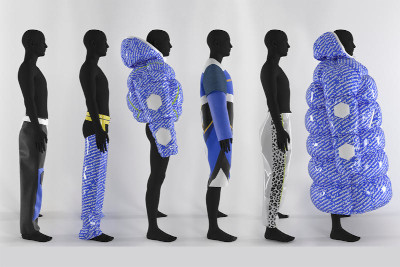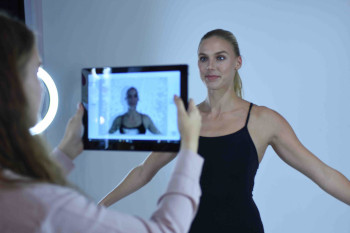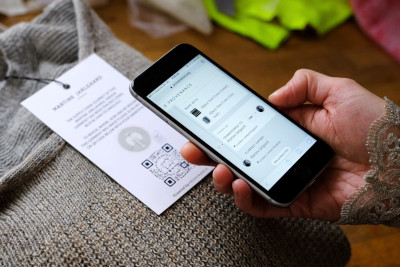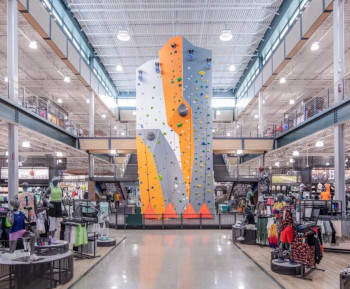Trends that can add creativity to your business strategy

2022 is here, and while another lockdown is not the start we had hoped for, we should still be optimistic and get creative about our business strategy for the new year. Need a springboard? I’ve put together 2022’s retail trends to (hopefully) spark a few ideas.
Virtual Fashion Shows

Due to world lockdown measures, luxury brands were forced to pivot and test out new ways to showcase their latest collections. Rather than hold fashion shows in person, brands like Moschino and Prada experimented with new ways to stream their collections online and were named ‘virtual fashion shows’. The key theme here is that Covid-19 has forced every industry to use new technologies to support their business. For the fabricare industry, this could be using video chat software to educate a client on how to properly pin a pair of pants for hemming or to point out a certain garment stain. Keeping abreast of new technologies that can add value to your customers’ experience will provide your business with an edge.
Body Scanners for More Accurate E-commerce Shopping

We’ve all faced the dilemma of putting something in our online shopping cart, only to second guess if it’s the right size. In some cases we ‘abandon cart’, in others, we buy two of the same item and return the one that didn’t fit. In both cases, the retailer pays the price. Enter ‘smart sizing’ – a technology backed by body scanning machines, sensors and 3-D cameras. Smart sizing technology is being used to assist consumers to find a better fitting product and for brands to eliminate costly returns. Consider how video and photography are easy and powerful tools to improve our own quality-assurance processes. Both SMRT and SPOT have photo integration features that allow you to use a cellphone to take images of a garment, which are then automatically associated to the client’s file. If you’re using a different POS system or are less tech-savvy, you can always use your own smartphone or an old-school point-and-shoot camera.
Never Ending Supply Chain Issues
Like every industry, the retail sector is facing supply chain issues and product shortages across the globe. With logistics complications and limited resources, brands will need to get creative with practices that balance their end-consumers’ needs and their own bottom line. Before the pandemic, traditional retail buying and planning methods were already starting to shift, but now buyers and suppliers are being forced to work together. Even the dry cleaning industry has received media attention for the recent hanger shortage. We can try to navigate these uncertain times by better planning, and leaning on the expertise of our suppliers and industry friends. Think creatively too – can you switch up your packaging? Test new cleaning solutions? Are any shops closing in your area and do they have extra supplies? These shortages are not going away in the near term, so play the long game.
Product Passports

Retail in 2022 is all about traceability. Brands are introducing product passports, or a digital footprint of a garment’s supply chain journey, to be more transparent with end-buyers. Counterfeit products are a major concern among luxury retailers, and a product passport is one way to prove authentication. A standardized system across the major retail brands will need to be created to make this scale. Funnily enough, the idea of a ‘product journey’ is not new. Think of Domino’s Pizza Tracking app that allows its customers to see their pizza travel from the pizza shop to their door. While our clients may not be as interested in knowing their garment is in the wash, there are simple ways we can be more transparent with our customers – whether it’s education on cleaning methods or updating them via text when their order is ready.
Social Shopping

After two years of lockdown measures, consumers are looking for a shopping experience that exceeds their e-commerce experience. To do so, retailers are investing in an experiential customer journey to make shopping more novel and fun. With the vision to offer the most compelling shopping experience, Nordstrom now offers sneaker cleaning, embroidery and tailoring services. Stores like MEC and Dick’s Sporting Goods have built rock climbing walls to entice people to live their mission of adventure and athleticism. Reformation’s New York concept store offers shoppers changing room preferences with customized scent, temperature and lighting options. Use these examples as a springboard to consider what part of your customer experience speaks to your mission, vision and values. If your mission is to make your clients feel more confident, perhaps offer a free pack of gum or a lint roller. Spend some time thinking about how you can create a more experience-driven environment than one that is simply transactional.
Though these are macro-level trends, they are good places to start brainstorming about how you can build upon your current strategy.






